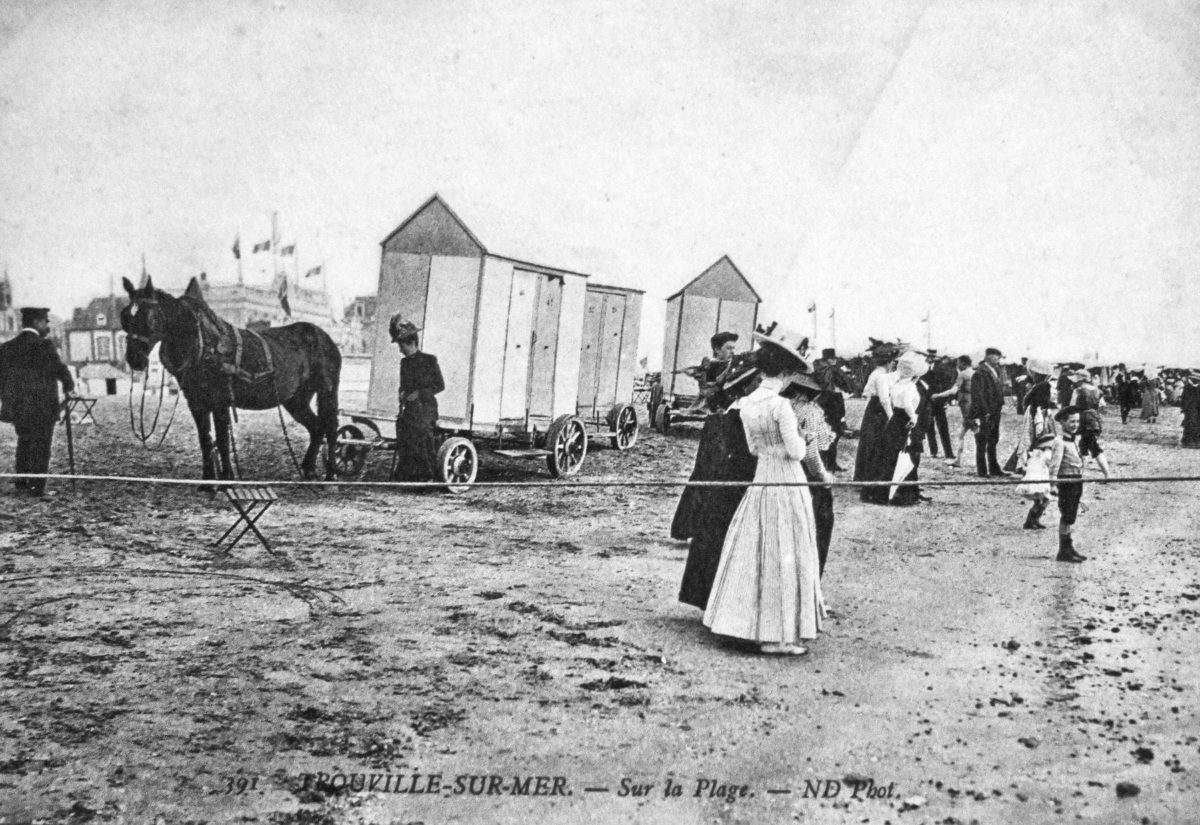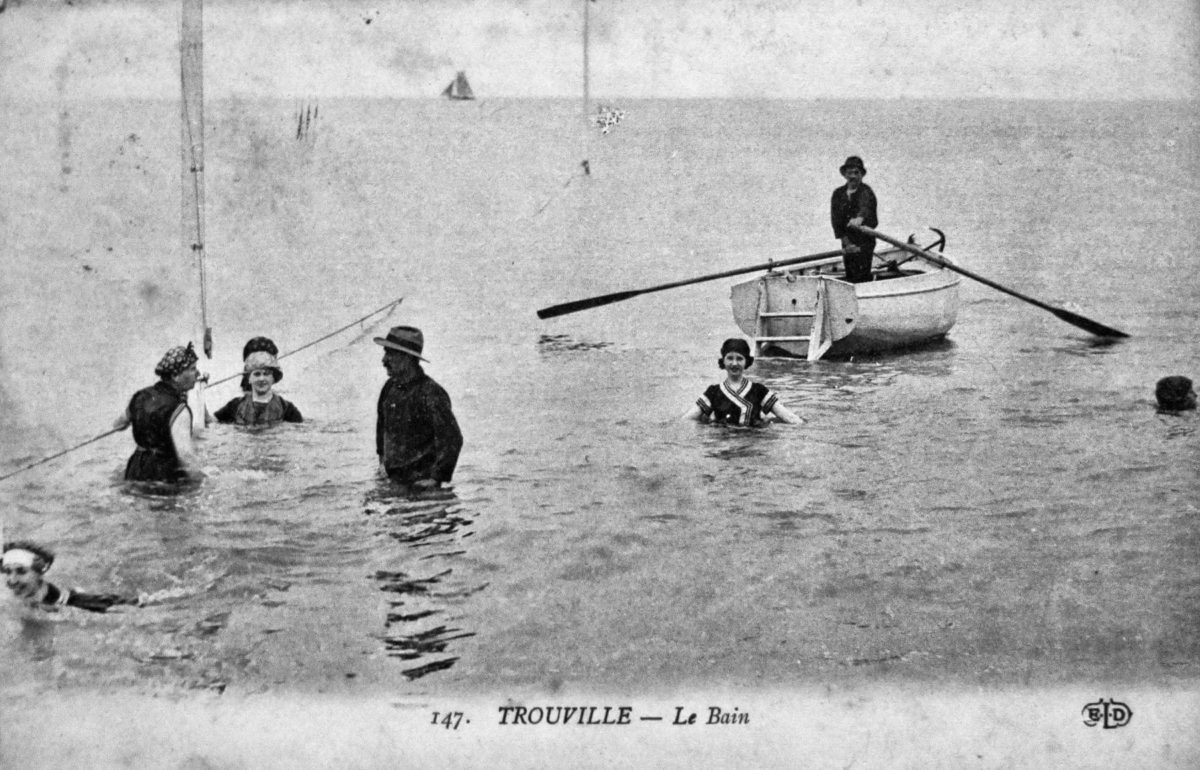Trouville-sur-Mer became the fashionable place thanks to the impetus given by the artists. We went there to escape the social life of Paris, to see our children play and breathe the fresh air and finally to take a bath.
Indeed from 1835, people come to Trouville-sur-Mer for therapeutic purposes. At the slightest infection, at the slightest dizziness, the doctor recommended a stay in our resort. This therapy very quickly turned to the advantage of the resort and coming to Trouville-sur-Mer, for treatment, became an excuse to indulge in the joys of sea bathing. The beach was quickly invaded by a whole society eager for new amusements. The most total anarchy reigned on the beach. The municipality quickly realized that action had to be taken and that regulations were needed to harmonize this new activity.
At first, the beach was separated into three equal parts delimited by ropes which went from the beach to the sea. The part on the right was reserved for men, dressed at least in underpants. The left part, that of the women, dressed from the neck to the ankles, covered with a large blue blouse and the hair protected by an oilcloth cap and the middle part, that of the families.
In order to achieve real homogenization, bathing suits were rented, the aim being that the eyes would not be attracted by too extravagant bathing suits. These costumes were made in jersey, they had the best hold when they were dry but the result was quite different when they got out of the bath.
In order to escape the mockery of each other, the famous cabins afloat, wooden beach cabins, mounted on wheels and pulled by horses, were built. Madame entered the cabin accompanied by her maid who helped her to undress and put on the bathing suit and, meanwhile, the cabin went to the sea. Once Madame was ready, she only had to open the cabin door and take the plunge.



